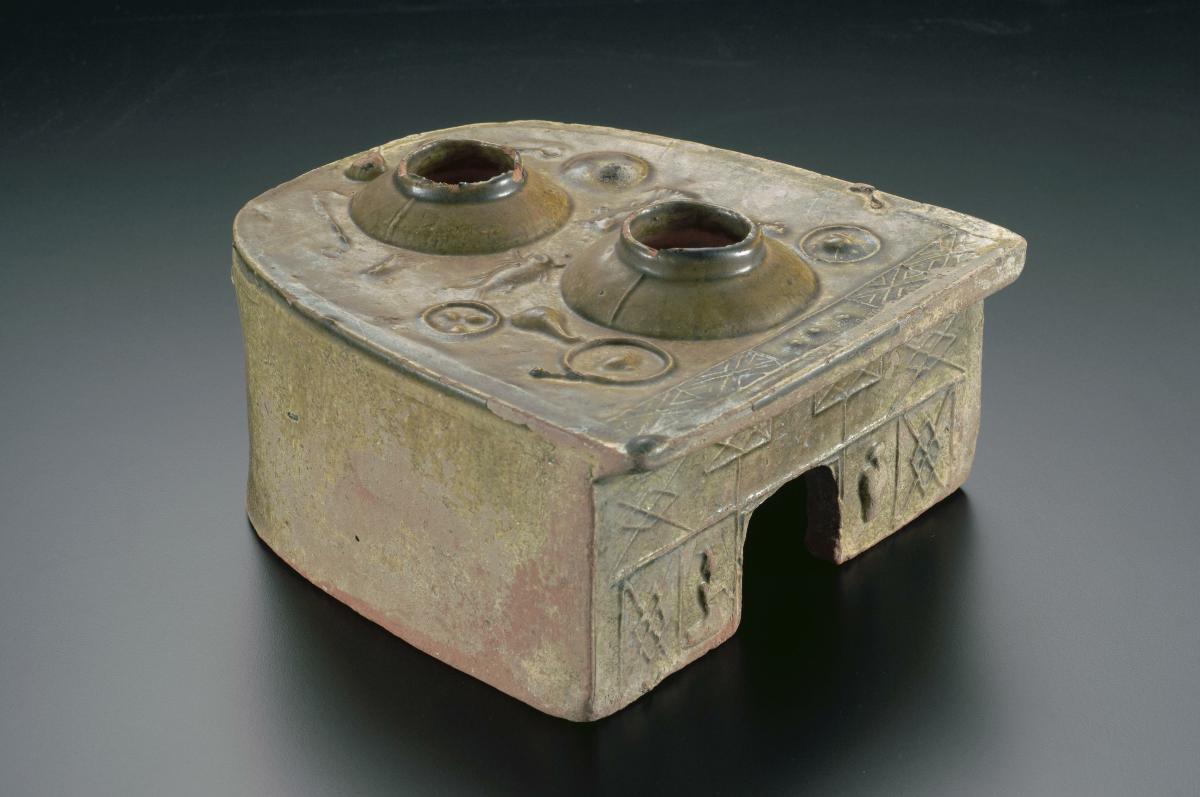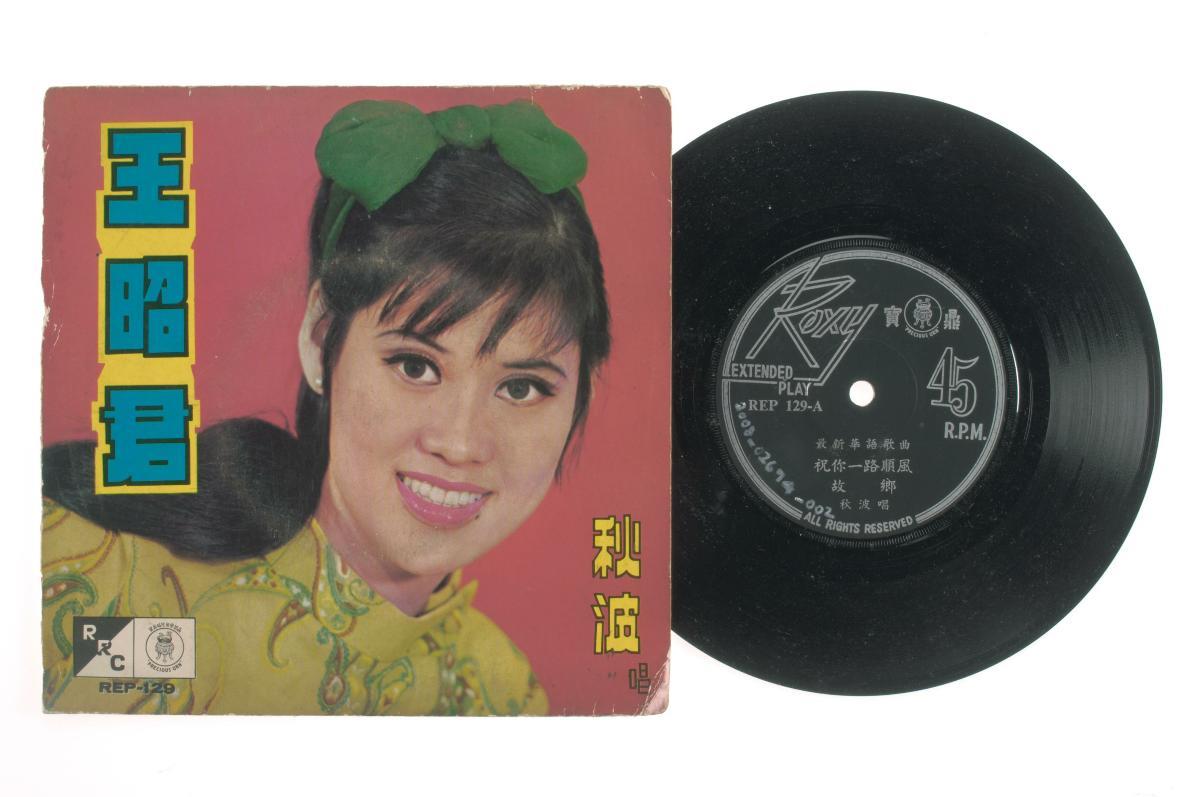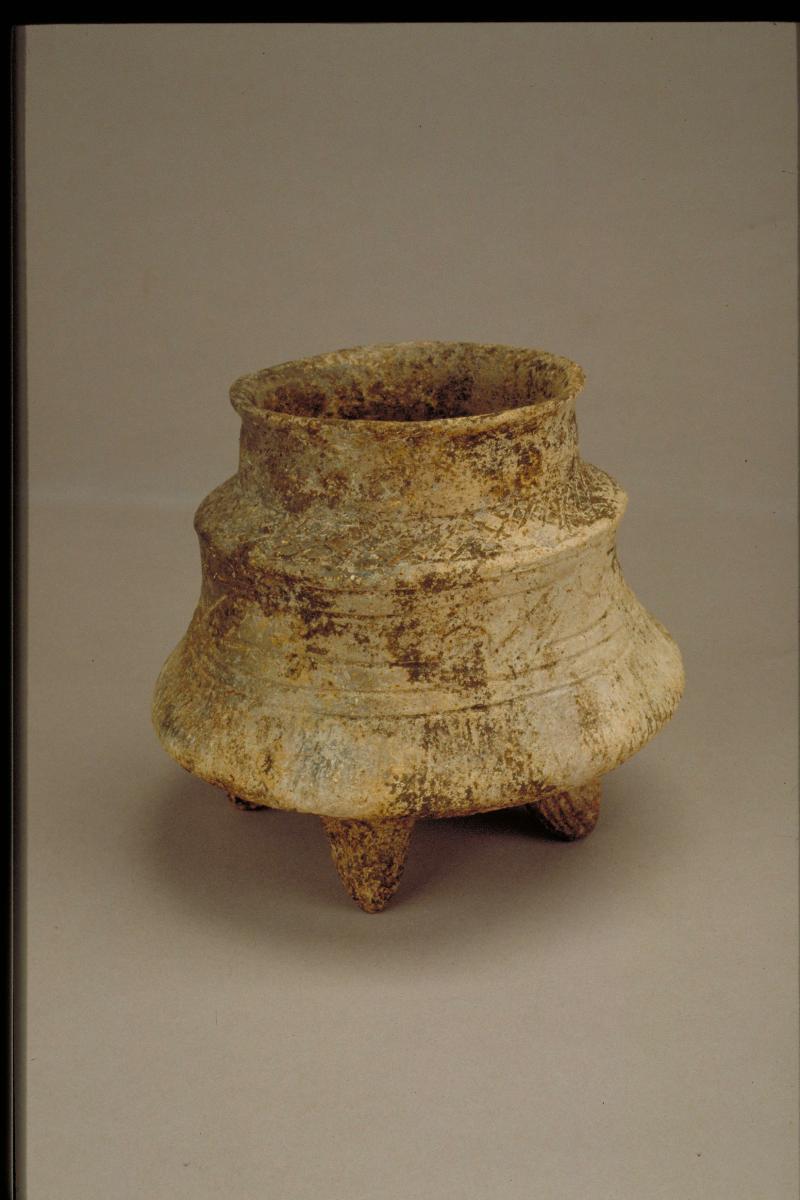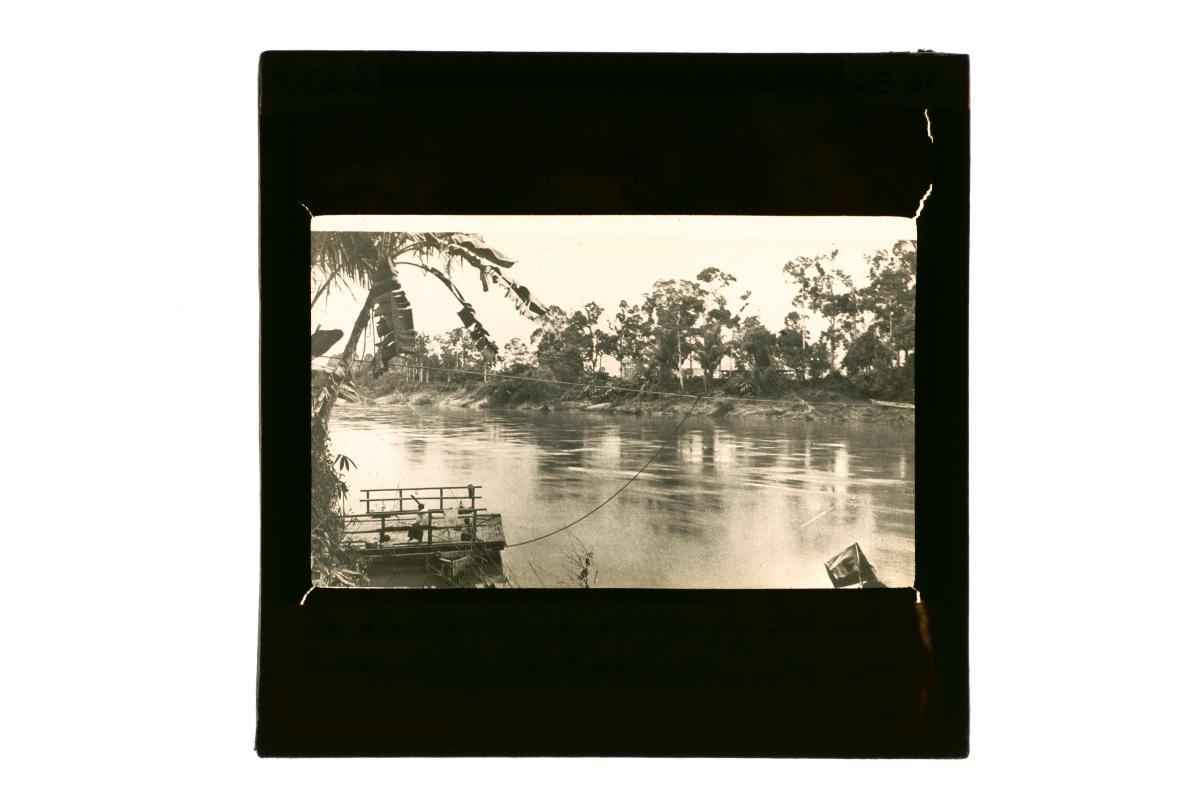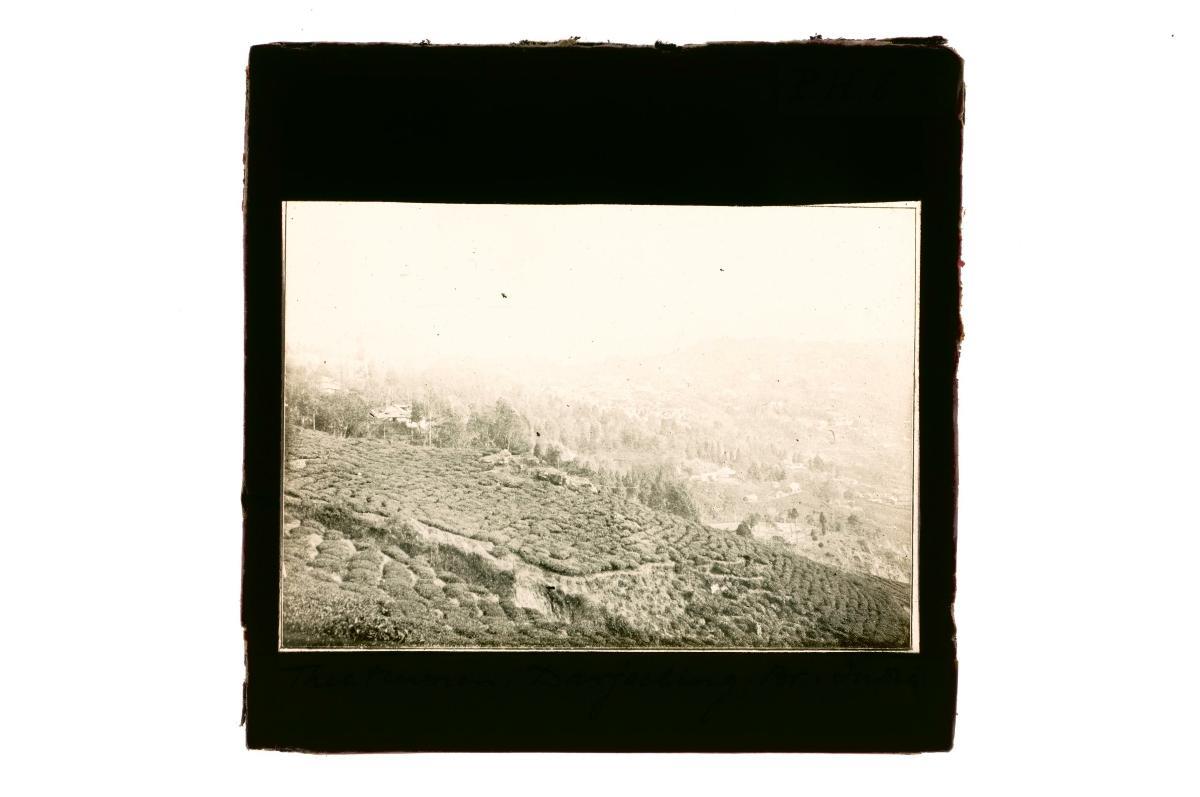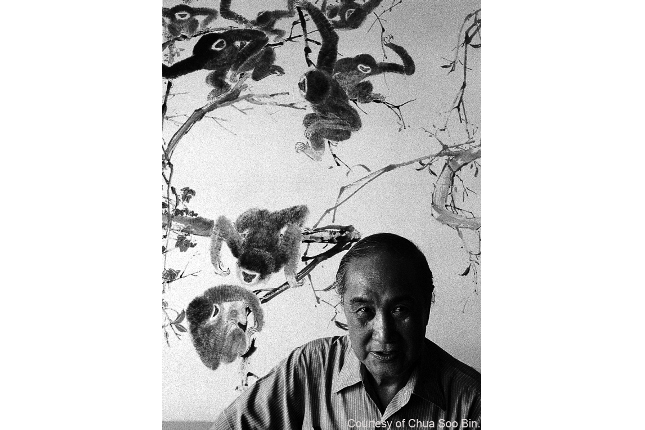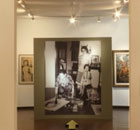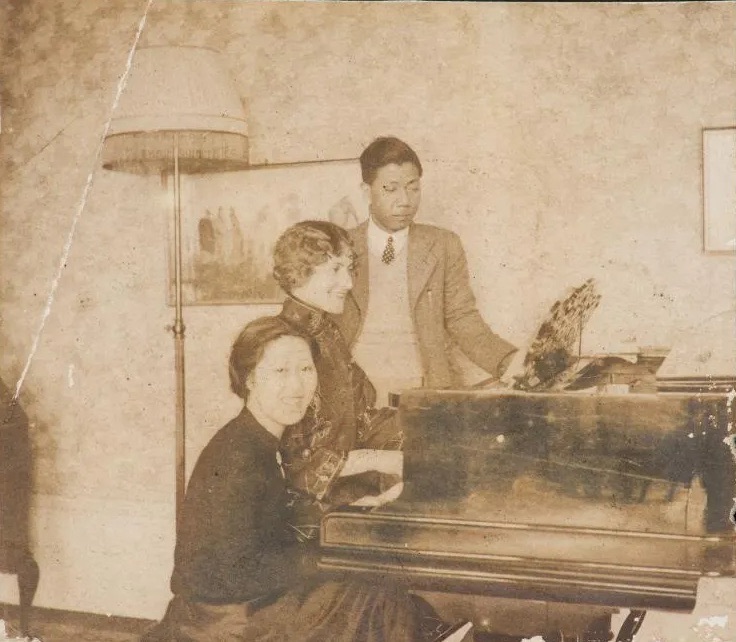This lead-glazed stove model served as a burial object. This model stove has decorations moulded and luted onto it. The decorations comprise of a ladle, hooks, prawns, fish and a figure who appears to be stoking the fire by the fire chamber. Other burial items include earthenware burial figurines, models of domestic animals and kitchen utensils, and architectural and agricultural models, such as watchtowers, houses and granaries. The practice of using lead-glazed burial wares had already started during the Han dynasty (206 BCE-220 CE) and it continued into the Ming period. The custom of burying objects with the deceased stems from the belief in life after death. Burying the stove ensured that the deceased could continue ‘life’ in the underworld and served as a proof of his or her identity to underworld officials.




